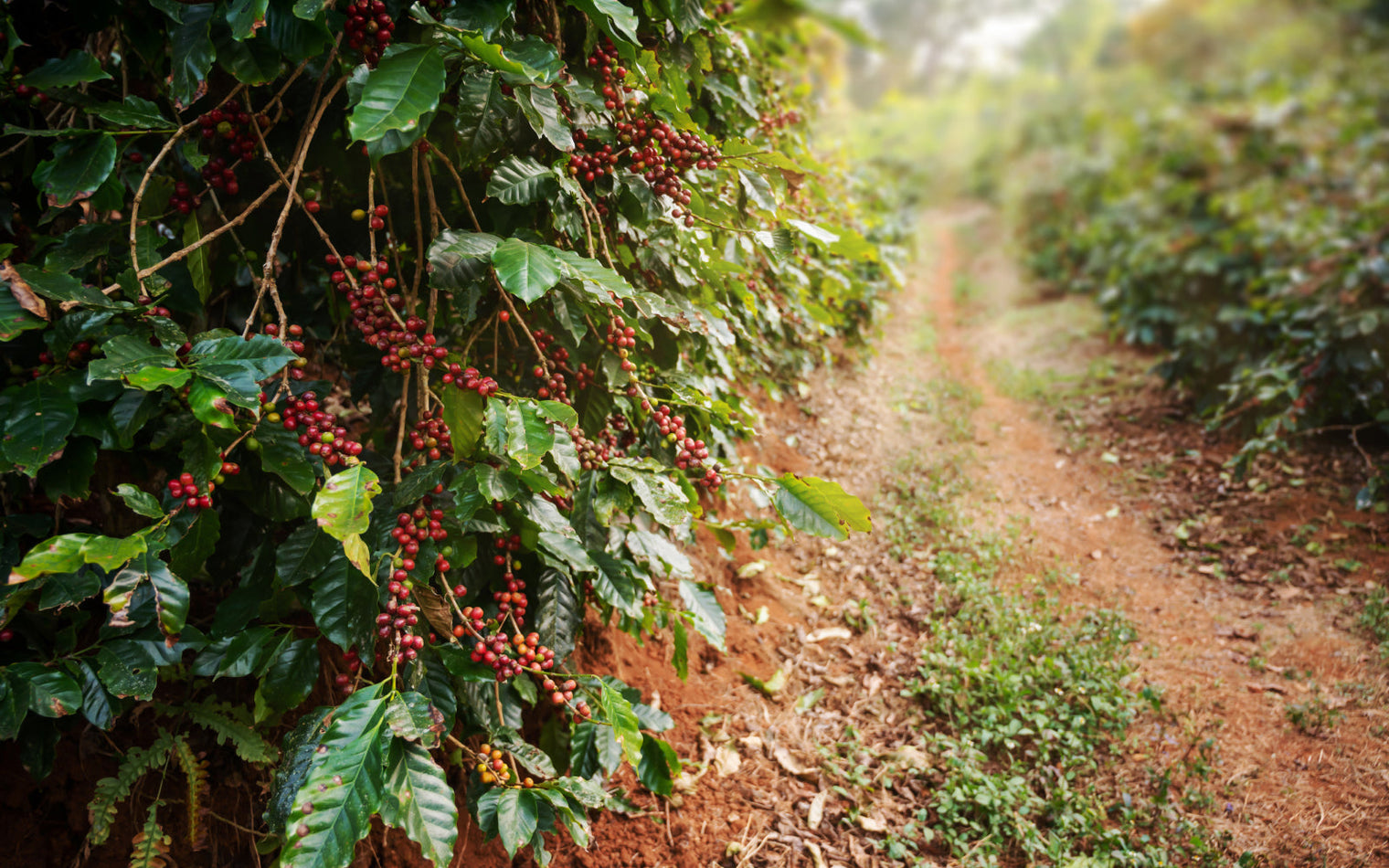Coffee only grows under specific conditions—in the so-called coffee belt around the equator. The soil, climate, and cultivation methods significantly influence the flavor. Learn how coffee is grown, harvested, and processed to develop its full aroma.
How is coffee grown?
Coffee is one of the world's most popular beverages – but before it ends up in your cup, it has a long journey behind it. Growing coffee requires patience, knowledge, and the right climatic conditions. In this article, you'll learn where and how coffee grows, which factors influence its flavor, and why sustainable farming methods are becoming increasingly important.
Where is coffee grown?
Coffee only thrives in a specific geographical area—the so-called "coffee belt." This stretches along the equator between the 23rd parallel north and the 25th parallel south. The largest coffee-producing countries include:
- Brazil – world’s largest producer
- Colombia – known for high-quality Arabica
- Ethiopia – country of origin of coffee
- Vietnam – main producer of Robusta beans
- India, Indonesia and Central America – variety of specialty coffees
Each region produces its own unique flavor nuances – influenced by altitude, rainfall and soil conditions.
Influence of terroir on coffee
Similar to wine, the “terroir” – a combination of climate, soil and altitude – influences the taste profile of coffee.
| factor | Influence on coffee |
|---|---|
| Altitude | Higher-altitude plantations (over 900 m) produce complex, fruity coffees. |
| climate | Consistent temperatures and sufficient rainfall are essential. |
| Floor | Volcanic soils are particularly rich in nutrients and provide expressive aromas. |
Arabica vs. Robusta: The most important coffee types
Of the more than 120 known types of coffee, two are particularly relevant to the world market: Arabica and Robusta .
- Arabica coffee (Coffea Arabica) – 70% of global production, known for its fine acidity and complex flavors.
- Robusta coffee (Coffea Canephora) – strong, earthy flavor with higher caffeine content, more resistant to disease.
While Arabica grows primarily at higher altitudes, Robusta also thrives in hotter, more humid regions.
Sustainable coffee cultivation: forest gardens and permaculture
Sustainability is playing an increasingly important role in modern coffee cultivation. Cultivation in forest gardens , where coffee plants grow under shade trees, has proven particularly successful. The advantages of this method include:
- Protection against pests through natural biodiversity
- Maintaining soil fertility through natural fertilization
- Less water consumption compared to monocultures
Many of our high-quality coffees come from sustainable farming projects.
Harvesting and processing: The key to the perfect coffee
Harvest time varies depending on the growing region. While Ethiopia harvests once a year, Colombia can harvest up to three times a year. The harvesting method influences quality:
- Hand-picking: Only ripe cherries are selectively harvested (highest quality).
- Mechanical harvesting: Faster method, but less selective.
After the harvest, the coffee cherries are processed to remove their pulp:
- Washed processing: Clearer, fruity aromas
- Dry processing (natural): Sweeter, fuller notes
- Honey Process: A cross between washed and dry
Conclusion: Coffee cultivation is art and science
Coffee cultivation is a complex process that requires considerable experience and dedication. The combination of terroir, cultivation method, and processing ultimately determines the aroma and quality of the coffee.
If you'd like to learn more about sustainable coffee farming or have any questions, visit our contact page . Or try our coffee subscription to enjoy freshly roasted coffee regularly!




